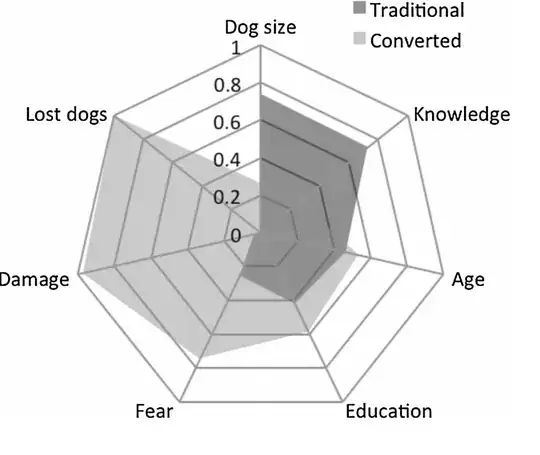I'm currently facing some issue in determining what statistical test might be best to adopt to determine whether or not my three datasets are significantly different from each other.
I have the following datasets of probabilities observed within my Experiment:
prob355 = [0.06672, 0.07473, 0.14813, 0.25516];
prob532 = [0.07226, 0.08718, 0.09631, 0.14276];
prob1064 = [0.05979, 0.09020, 0.10891, 0.11307];
Within these datasets, each entry corresponds to a probability obtained under certain experimental conditions such that within the dataset the conditions for prob355(1) ≠ prob355(2) prob355(3) ≠ prob355(4). Between the datasets they have been ordered such that prob355(1) = prob532(1) = prob1064(1).
These datasets are accompanied by the following errors/standarddeviation/noise in the observed probabilities:
model_error_355 = [0.03255, 0.03986, 0.01321, 0.01928];
model_error_532 = [0.01370, 0.00880, 0.00856, 0.04257];
model_error_1064 = [0.03150, 0.02441, 0.02307, 0.02059];
Within these datasets, each entry corresponds to the same entry as in the prob355, prob532 or prob1064.
Basically, what I'm looking for is to compare each of the overall datasets (whilst taking the standard deviation in each value into account) amongst each other and determine if overall these datasets are statistically different from each other. Or if possible I would like to find out which of the values are significantly different from each other.
The goal of this comparison for the overall datasets would be prove the hypothesis that these values are not significantly different from one another. Secondly, the goal would be to determine if for each of the individual conditions (eg. prob355(1) = prob532(1) = prob1064(1)) the values are significantly different or not.
Currently, I'm using Matlab to run my analysis but I'm not bound to this software to run this analysis as long as the alternative is open acces :)
So, If anyone knows a good way of making this comparison I would be very happy to hear it.
Thanks!
